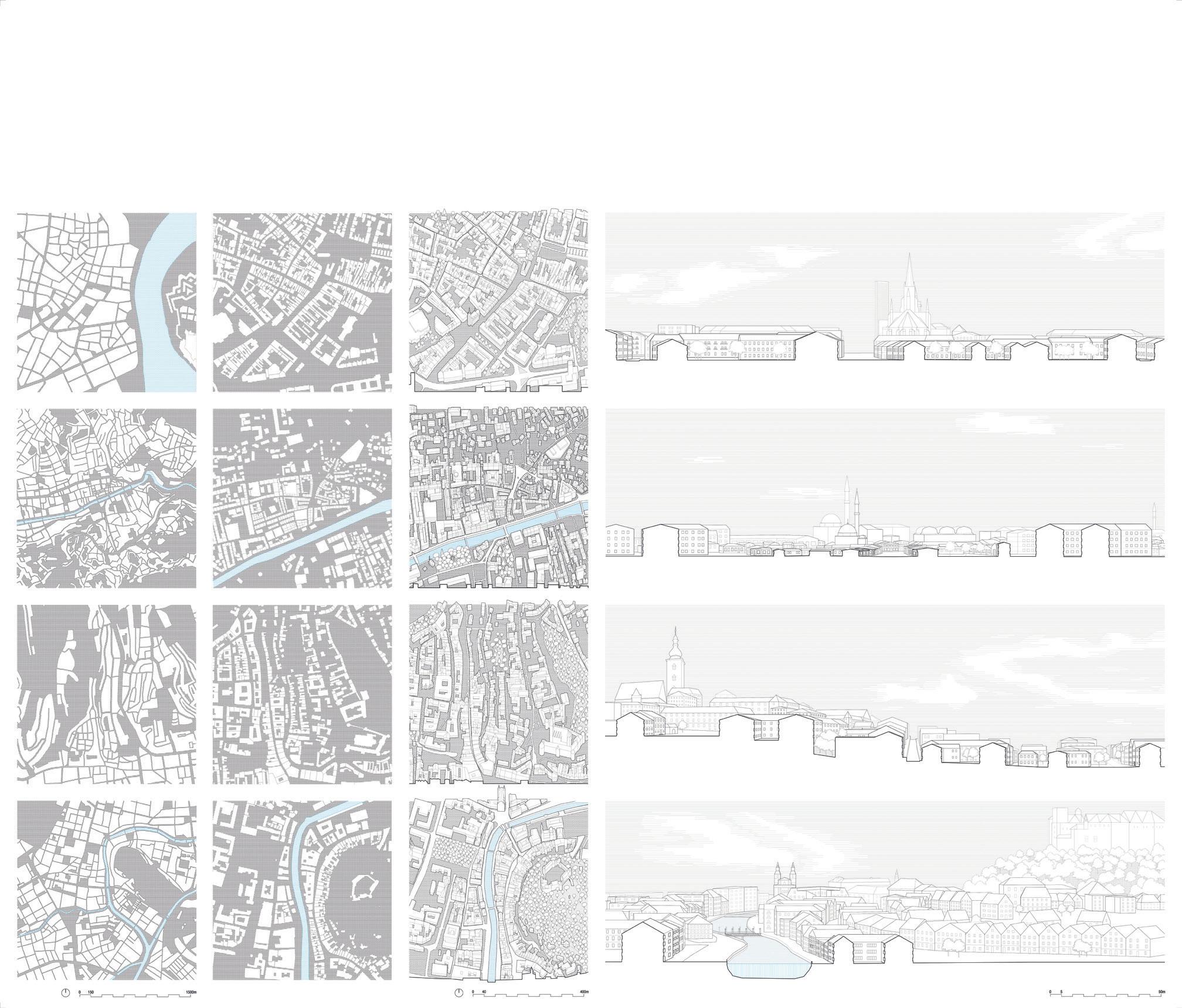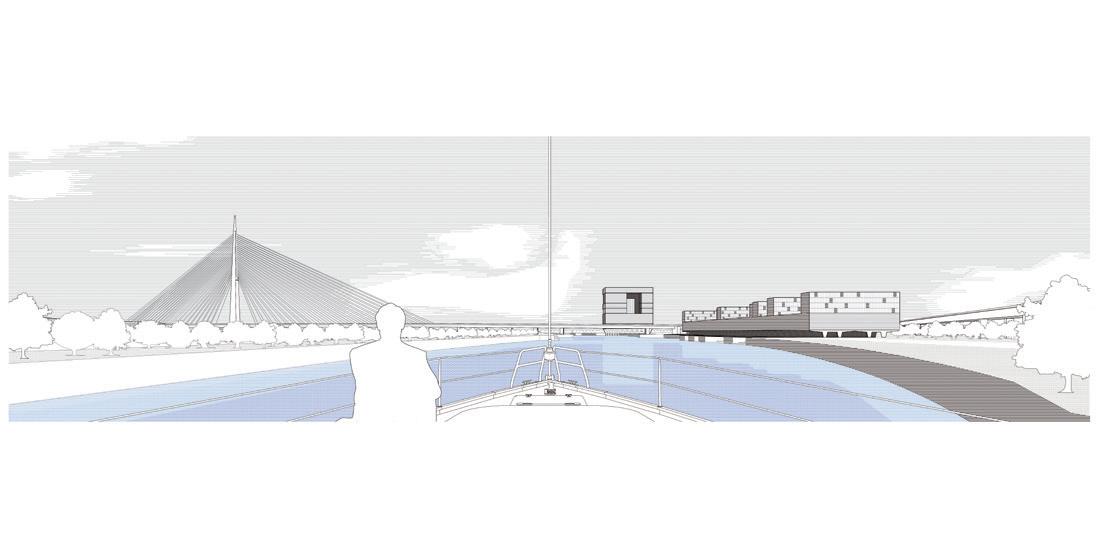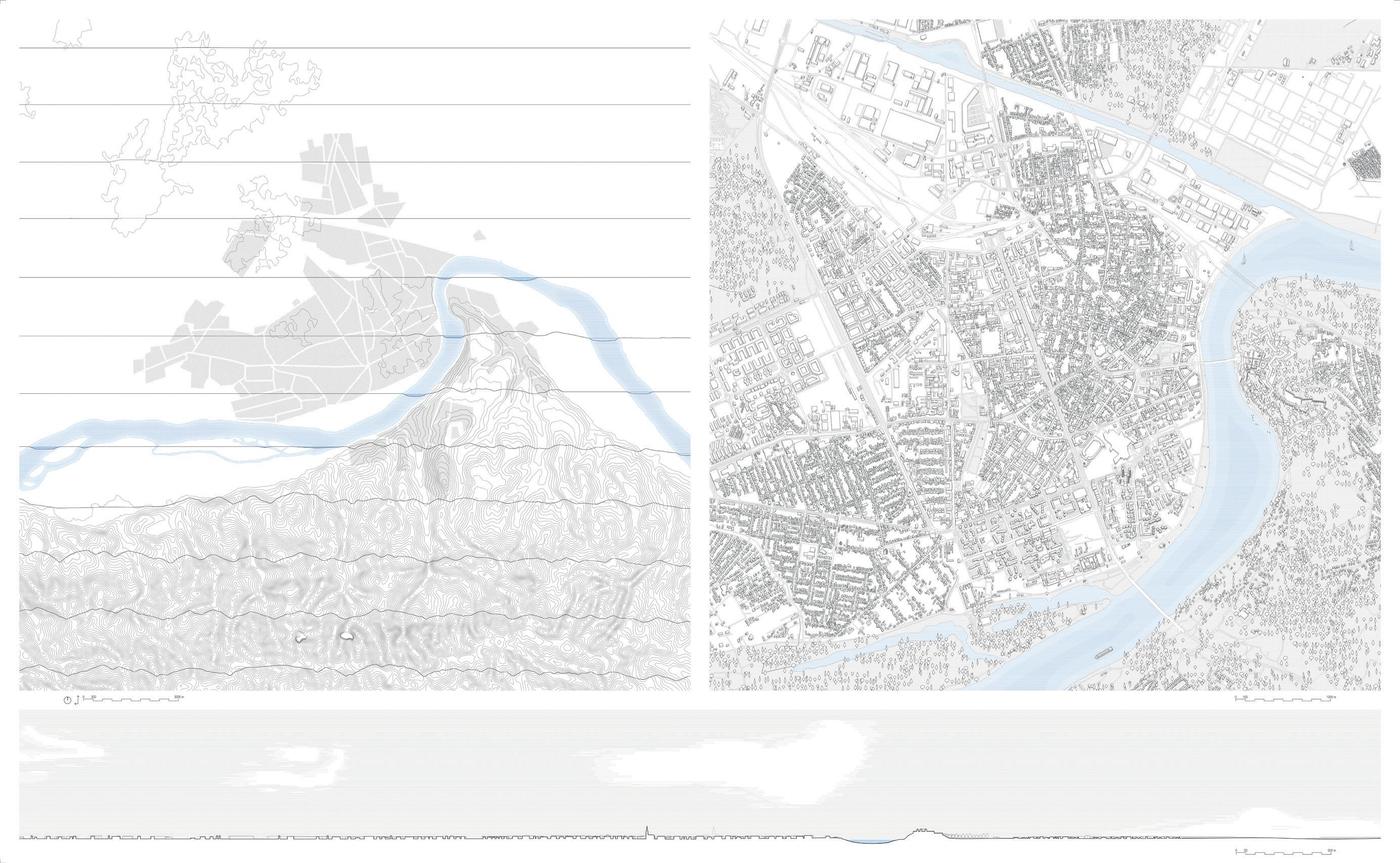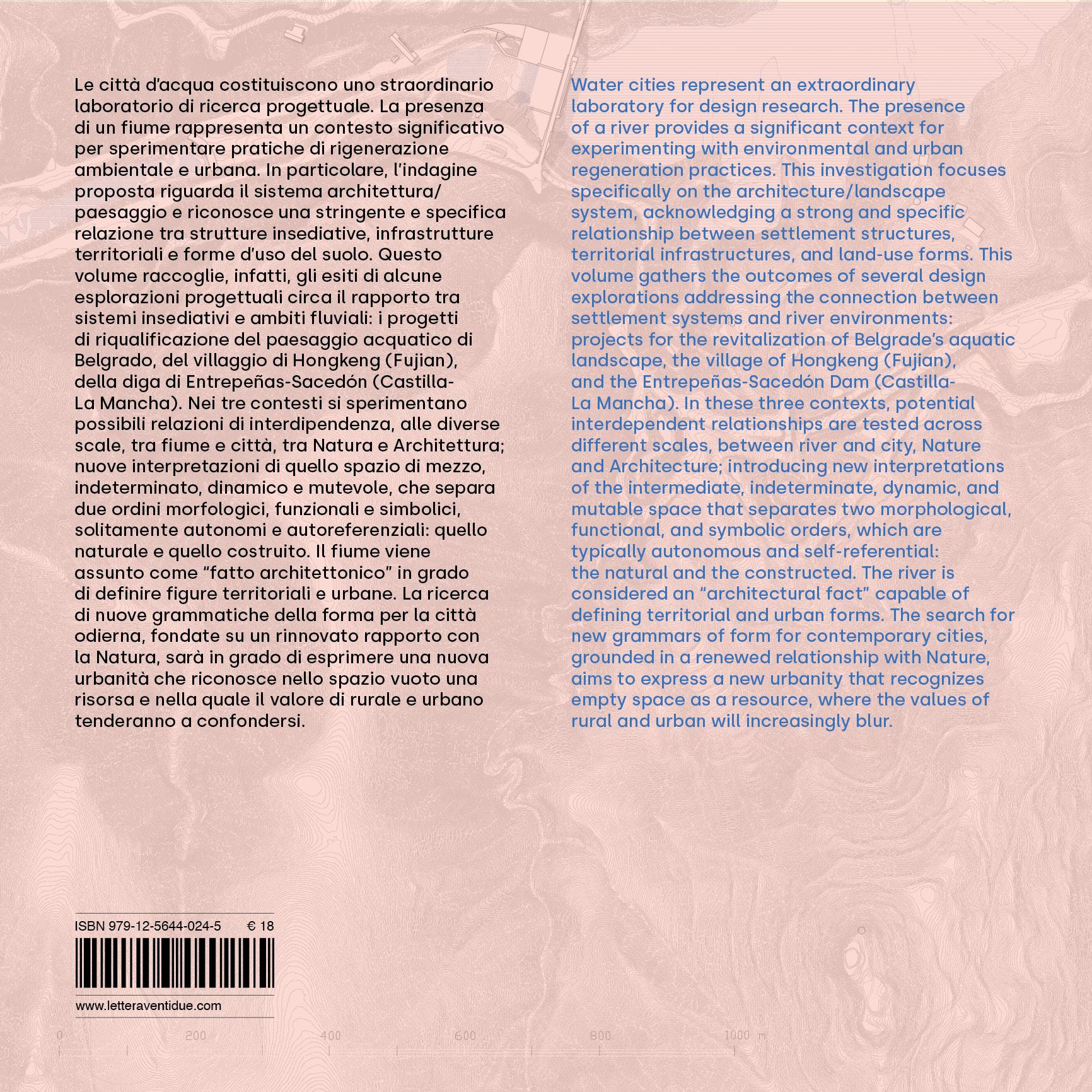Indice
Posare lo sguardo sulle città d’acqua
Armando Dal Fabbro
Il fiume, la città, il territorio, il progetto
Victoriano Sainz Gutierrez
Abitare gli argini.
Il fiume come progetto urbano e territoriale
Ricomporre frammenti: le stanze fluviali.
Arcipelaghi urbani dei Balcani
Tessere recinti: i dispositivi architettonici.
Arcipelaghi rurali del Fujian
Ripensare il limite: la diga abitabile.
Infrastrutture territoriali della España Vacía
Resting one’s gaze on the cities of water
Armando Dal Fabbro
The river, the city, the territory, the project
Victoriano Sainz Gutierrez
Inhabiting the river banks.
The river as an urban and territorial project
Recomposing fragments: rooms on the river.
Urban archipelagos of the Balkans
Weaving enclosures: architectural devices. Rural archipelagos of Fujian
Rethinking the boundary: the habitable dam.
Territorial infrastructures of España Vacía
Bibliografia
Ringraziamenti
Bibliography
Acknowledgements
Balkans
precedenti:
Previous pages: Belgrade (pp. 6-7); Novi Sad (pp. 8-9)
Città fluviali dei Balcani. Dall'alto in basso. Novi Sad; Sarajevo; Zagabria: il nucleo antico
Pagine
Belgrado (pp. 6-7); Novi Sad (pp. 8-9)
river cities. From top to bottom. Novi Sad; Sarajevo; Zagreb: the ancient core
Posare lo sguardo sulle città d’acqua
Armando Dal Fabbro
Posare lo sguardo sulle città d’acqua –con lo sguardo dall’acqua – può essere illuminante nel comprendere, anche in senso antropologico, il ruolo determinante degli elementi naturali, come i fiumi, le lagune o i mari, che hanno segnato in profondità, con i loro lenti meandri o con il semplice rispecchiarsi della loro massa d’acqua, i caratteri dei territori che, nel tempo, si sono codificati nei segni identitari delle loro città.
Del resto, non credo di sbagliare molto nell’affermare che tutti i territori antropizzati, quelli che hanno saputo esprimere qualità espressiva nel fondere natura e artificio, hanno avuto origine, per loro vocazione o necessità fisiologica, in riva a un corso d’acqua o nell’alveo di una laguna o ai bordi del mare.
La particolare morfologia del paesaggio urbano, determinata dalla orografia del territorio, ha sempre rappresentato un valore aggiunto alla qualità dello spazio antropico, che si è via via codificato plasmandosi nei caratteri tipo-morfologici
Resting one’s gaze on the cities of water
Resting one’s gaze on cities of water –observing them from the water itself – can be illuminating if we want to understand, including anthropologically, the decisive role played by natural elements such as rivers, lagoons, or seas. Through their slow meanders or simply in the reflection of their waters, these have profoundly shaped the characteristics of territories that, over time, have codified themselves into the identifying markers of the cities that belong to them.
I think it might not be completely wrong, moreover, to say that all the territories that have been anthropicised – at least those that have found a way of giving form to an expressive quality in their blending of nature and artifice – originated (whether by vocation or out of physiological necessity) on the banks of a watercourse, in the bed of a lagoon, or along the edges of a sea.
The particular morphology of the urban landscape, which is determined by the orography of the territory, has always
Città fluviali dei Balcani: Novi Sad; Sarajevo; Zagabria: sezioni urbane
Balkans river cities: Novi Sad; Sarajevo; Zagreb: urban sections
Il
fiume, la città, il territorio, il progetto
Victoriano
Sainz Gutierrez
Numerose sono le città in tutto il mondo che sono nate e si sono sviluppate in stretta relazione con i corsi d’acqua. La presenza di un fiume ha spesso determinato il luogo in cui l’uomo ha deciso di insediarsi, cercando la vicinanza a questa risorsa essenziale per la vita, che è l’acqua, ma anche, quando la navigabilità del fiume lo consentiva, una via di comunicazione conveniente. Per questo, lo studio dell’idrografia del pianeta aiuta a comprendere come e perché si sono formati i sistemi urbani esistenti, sia lungo i margini costieri che sui corsi fluviali. Come affermava Buffon nella sua Storia naturale scritta nel XVIII secolo, “i fiumi che conosciamo non sono solo opera della natura, ma anche del lavoro degli uomini e delle società avanzate”; infatti, le trasformazioni a cui i fiumi sono stati sottoposti per convivere con gli ambienti urbanizzati riflettono quella complessa articolazione tra il naturale e l’artificiale, o, se si preferisce, tra il mutevole e il permanente, che caratterizza gli spazi urbani.
The river, the city, the territory, the project
Il fiume, la città, il territorio, il progetto
Many of the world’s cities came into existence and developed in close relationship with watercourses. Seeking proximity to water as an essential resource for life, humans have often decided to settle in a particular location because there was a river which, if it was navigable, could also be used as a useful route for communication. So by studying the earth’s hydrography we are able to understand how and why our existing urban systems formed along coasts and on rivers. As the Comte de Buffon wrote in his eighteenth-century Histoire Naturelle, “the rivers we know are not only the work of nature but also of human labour and advanced societies”; indeed, the transformations that rivers have undergone to make them coexist with urbanised environments are a reflection of that complex interaction between the natural and the artificial, or, if preferred, between the mutable and the permanent, that characterises urban spaces. This explains the dual approach that has often been taken when considering
Una stanza sul fiume Sava: masterplan
Pagine precedenti. Belgrado: strategia di progetto. Il sistema delle “stanze fluviali” (pp. 48-49)
The room on the Sava: masterplan
Previous pages. Belgrade: masterplan. The system of “river rooms” (pp. 48-49)
Ricomporre frammenti: le stanze fluviali.
Arcipelaghi urbani dei Balcani
Recomposing fragments: rooms on the river.
Urban archipelagos of the Balkans
Il progetto di riqualificazione urbana del paesaggio acquatico di Belgrado ha come obiettivo quello di offrire una lettura metodologica, interpretativa e progettuale della struttura urbana della capitale serba: una terra di mezzo, tra Oriente ed Occidente, crocevia di storie, popoli e culture; una città resiliente, dai confini labili, occasione di conflitti sanguinari, bombardata a più riprese, rasa al suolo per ben quarantaquattro volte. Come una fenice rinata più volte dalle ceneri, ha un’anima complessa, tormentata da un susseguirsi di vicende che hanno lasciato impresse, nel palinsesto della città, tracce chiaramente leggibili. Belgrado è una città-mondo che vive di contrasti: “il suo cuore è ovunque e da nessuna parte”1. È ubicata in una posizione strategica, lì dove due fiumi navigabili, dal temperamento opposto, mescolano le loro acque: il Danubio, imponente, fiero e superbo; la Sava, modesta, gentile e sinuosa. Dalla cima di una collina, domina il bassopiano pannonico, tagliata dai più grandi
Our urban reimagining project for the aquatic landscape of Belgrade seeks to offer a methodological, interpretative, and design-orientated understanding of the urban fabric of the Serbian capital: a place that is in between, bridging East and West, a crossroads of narratives, populations, and cultures; a resilient city with permeable borders that has been the battleground of bloody conflicts, has endured numerous bombings, and has been razed to the ground no less than forty-four times. Like a phoenix reborn multiple times from the ashes, it possesses a complex soul, tormented by a succession of events that have left distinct imprints on its palimpsest. As a world city, Belgrade thrives on contrasts with “its heart everywhere and nowhere”.1 It is situated strategically at the confluence of two navigable rivers with contrasting temperaments: the imposing, proud, majestic Danube, and the modest, gentle, meandering Sava. From the summit of a hill one can look down on the Pannonian Basin, where the

The vertical city: the blade building. Elevation view and longitudinal section
La città verticale: l’edificio lama. Prospetto e sezione
La città verticale: l’edificio lama. Vista prospettica
The vertical city: the blade building. Perspective view


















